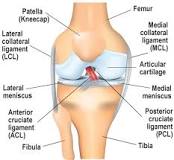ACL Replacement Surgery: Road to Recovery
Anterior Cruciate Ligament (ACL) replacement surgery is a common procedure performed to repair a torn ACL in the knee. The ACL is a crucial ligament that provides stability to the knee joint, and injuries to this ligament can be debilitating.
During ACL replacement surgery, the damaged ligament is removed and replaced with a graft, typically taken from another part of the patient’s body or a donor. This procedure is often recommended for individuals who have experienced significant knee instability due to an ACL injury.
Recovery Process:
The road to recovery following ACL replacement surgery can be challenging but with proper care and rehabilitation, most patients can regain strength and mobility in their knee. Here are some key points about the recovery process:
- Post-Surgery Care: After the surgery, patients are advised to rest and elevate their leg to reduce swelling. Pain management medications may be prescribed by the surgeon.
- Physical Therapy: Physical therapy plays a vital role in restoring strength and flexibility to the knee. Patients will work with a physiotherapist to perform exercises that gradually increase in intensity.
- Gradual Return to Activities: Patients will need to follow a structured rehabilitation programme that allows them to gradually return to normal activities such as walking, running, and sports.
- Patient Education: It is important for patients to understand their limitations and follow their surgeon’s recommendations closely. Compliance with post-operative instructions is crucial for a successful recovery.
Potential Complications:
While ACL replacement surgery has a high success rate, there are potential complications that patients should be aware of. These may include infection, blood clots, stiffness in the knee joint, or failure of the graft. It is essential for patients to report any unusual symptoms or concerns to their healthcare provider promptly.
Conclusion:
ACL replacement surgery can help individuals regain function and stability in their knees following an ACL injury. By following post-operative instructions, engaging in physical therapy, and being mindful of potential complications, patients can navigate the road to recovery successfully.
Understanding ACL Replacement Surgery: Key Questions Answered
- What is ACL replacement surgery?
- How long does it take to recover from ACL replacement surgery?
- What are the risks associated with ACL replacement surgery?
- Is physical therapy necessary after ACL replacement surgery?
- Can an ACL tear heal without surgery?
What is ACL replacement surgery?
ACL replacement surgery, also known as anterior cruciate ligament reconstruction, is a surgical procedure performed to repair a torn or damaged ACL in the knee. During the surgery, the torn ligament is removed and replaced with a graft, typically sourced from the patient’s own body or a donor. This procedure aims to restore stability to the knee joint and improve overall function. ACL replacement surgery is often recommended for individuals who have experienced significant knee instability due to an ACL injury, helping them regain strength and mobility in their knee for a better quality of life.
How long does it take to recover from ACL replacement surgery?
Recovery time following ACL replacement surgery can vary depending on individual factors such as overall health, adherence to rehabilitation protocols, and the extent of the injury. In general, patients can expect a recovery period of 6 to 9 months before they can return to normal activities, including sports. However, full recovery may take up to a year for some individuals. It is crucial for patients to follow their surgeon’s guidance closely, engage in physical therapy, and be patient with the healing process to achieve the best possible outcome. Regular communication with healthcare providers and diligent adherence to post-operative care instructions are key elements in ensuring a successful recovery from ACL replacement surgery.
What are the risks associated with ACL replacement surgery?
ACL replacement surgery, like any surgical procedure, carries certain risks that patients should be aware of. Some potential risks associated with ACL replacement surgery include infection, blood clots, stiffness in the knee joint, and the possibility of graft failure. While these risks are relatively rare, it is important for patients to discuss their concerns with their healthcare provider and follow post-operative instructions diligently to minimize the likelihood of complications. By being informed about the potential risks and working closely with their medical team, patients can navigate the journey towards recovery with confidence and peace of mind.
Is physical therapy necessary after ACL replacement surgery?
Following ACL replacement surgery, physical therapy is essential for a successful recovery. Physical therapy plays a crucial role in restoring strength, flexibility, and function to the knee joint. Through guided exercises and rehabilitation techniques, patients can regain mobility, reduce pain, and improve overall knee stability. Physical therapy also helps prevent muscle atrophy and promotes proper healing of the surgical site. It is highly recommended that patients adhere to their physiotherapy regimen as prescribed by their healthcare provider to achieve optimal outcomes and facilitate a safe return to daily activities and sports.
Can an ACL tear heal without surgery?
An ACL tear typically does not heal on its own without surgical intervention. The anterior cruciate ligament (ACL) is a vital stabilizing ligament in the knee joint, and when torn, it often requires surgical repair to restore function and prevent long-term complications such as instability and further damage. While some individuals may opt for non-surgical treatments like physical therapy to strengthen the surrounding muscles, surgery is often recommended for those looking to regain full knee stability and return to their previous level of activity. It is essential to consult with a qualified orthopaedic surgeon to determine the most appropriate course of treatment based on the severity of the injury and individual lifestyle goals.

